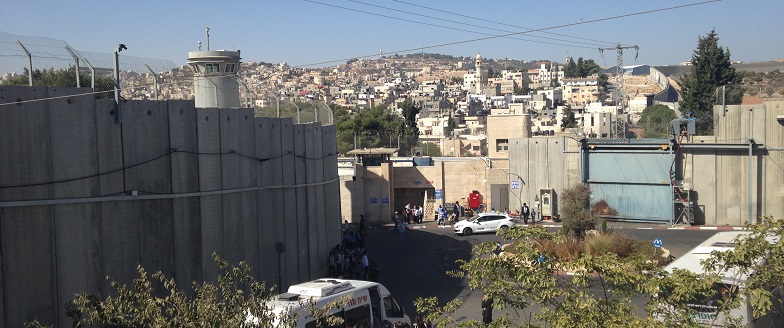
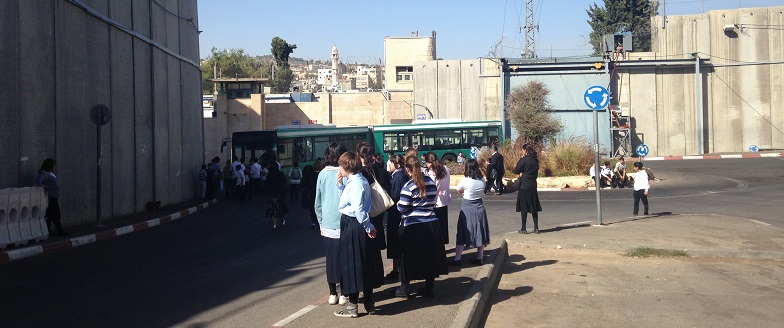
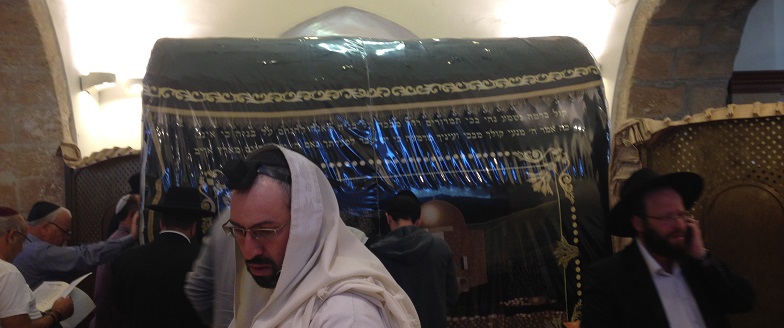
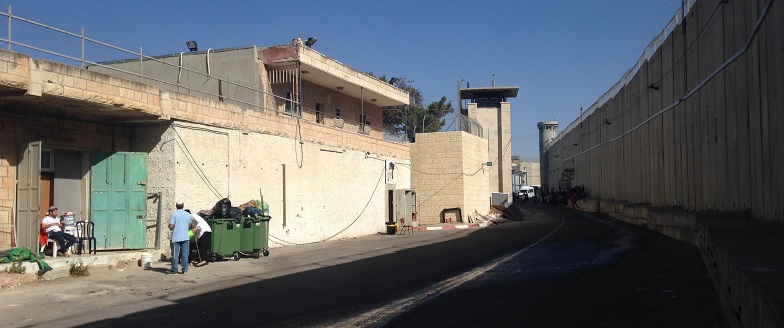
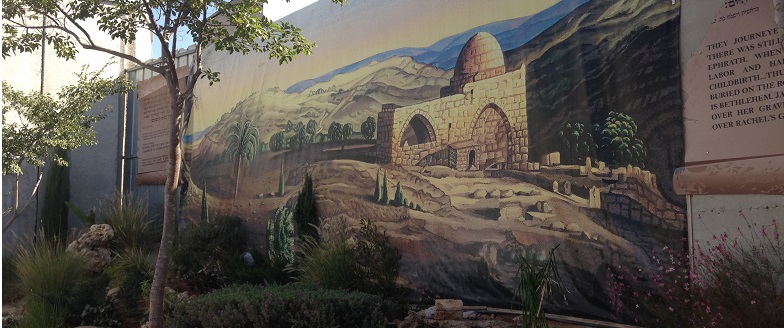

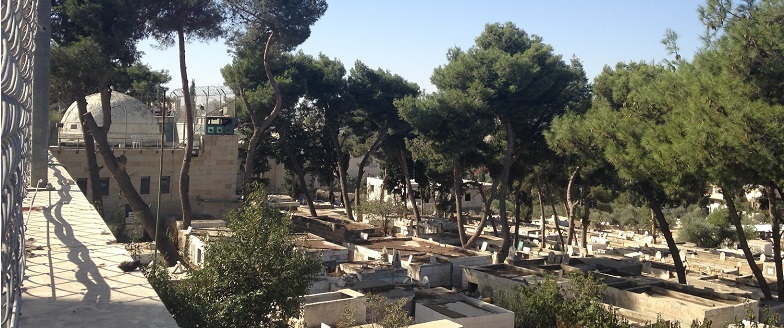
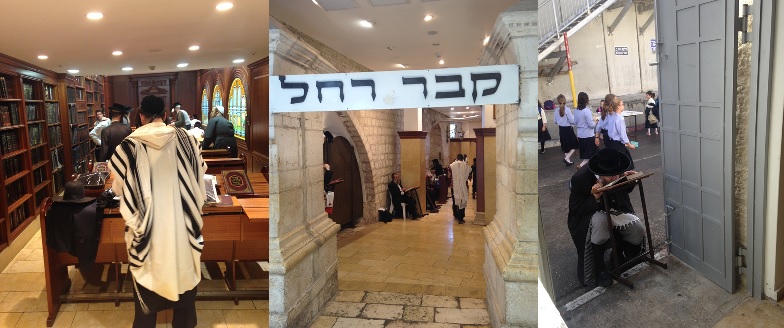
Venerated in the Jewish, Christian, and Islamic traditions for centuries, the Tomb of Rachel’s convoluted history goes back at least 1,700 years (Schiller 1978, Sered 1986, 1989, 1991, 1998, 1999; Limor 2007; Selwyn 2009, 2011). The matriarch’s burial place is mentioned in Jewish and Christian canonical texts as well as various Muslim sources. The cult surrounding her burial site is grounded on deeply-entrenched traditions. In Biblical and Rabbinical sources, the major themes in the Rachel narrative are love, barrenness, motherhood, and demise (Sered 1991, 132, 1998).
Over the centuries, this site has undergone multiple construction phases. The core structure—the dome and columns—dates back to the Crusader era, and the Muslim elements of the graveyard were completed by the Ottomans in 1622 (Schiller 1978b, 23). Over two hundred years later, Moses Montefiore (a British-Jewish philanthropist) purchased the site on behalf of the Jewish community. Not only did Montefiore repair the tomb, but he constructed a vaulted ante-chamber for Muslim prayers and burial preparations (the room was even furnished with a mihrab – a Muslim prayer niche). However, the most glaring change was wrought in 1995 when the architect Yaron Katz was commissioned by the Israeli government to renovate the site in accordance with onerous security demands.
Today, the most important celebration at the shrine is held on the customary anniversary of Rachel death (the 11th of Ḥeshvan – a Hebrew month that falls out in the autumn). On this day, thousands of Jews flock to the site for the hillulah (a feast marking the date of a saint’s passing). In the last ten years, the anniversary was even been added to the state’s official list of commemoration days.
Nurit Stadler
Visiting Rachel's Tomb
Date of visit: October, 2013
My colleague Lior Chen and I met in the morning at the bus station in Jerusalem waiting for bus 163 to take us to Rachel's Tomb. Standing next to us and waiting for the same bus were several women with shawls on their heads and Psalms book in their hands. Finally we got on the bus and started heading towards Rachel's Tomb. The bus drove through Orthodox neighborhoods of Jerusalem, and more people went up the bus until it was crowded. Most of the passengers were women in different ages, and almost everyone was reading Psalms. During the trip, a woman walked between the passengers and distributed Psalms mini-books for reading before entering the holy site. She also gave me a copy and said that "the old lady in the front seat has asked us to read it." Also during the trip, an ultra-Orthodox guy distributed copies of a magazine called "Mama Rukhel" (mother Rachel) and a leaflet that contains blessings and praises for "our mother Rachel." My first impression was that we are heading towards an important place, with political significance for everyone and religious importance for each individual. In fact, the Psalms reading, the distribution of the leaflets and magazine and the general atmosphere in the bus were some kind of a "spiritual preparation" for the visit.
The trip was less than one hour and we arrived at Rachel's Tomb without passing through any checkpoint or having a security check, as the whole compound is located in the Israeli side of the separation barrier. I put a Kippa on my head and before entering the building itself I took a look around: the whole compound is quite small (parking place, small open field and a new, expanded and fortified building of the tomb itself), and it is surrounded by a high concrete wall. Above the wall there is a barbed-wire fence and every dozens of meters stands a fortified Pillbox post. The people visiting the tomb come from diverse populations. Indeed, most of them are Jewish people who believe in god, but they come from different backgrounds: ultra-Orthodox and orthodox, penitents and traditional. For example, some of them wear jeans and sandals while others have white-buttoned shirts and black suits.
After we had entered the building, it took us some time to understand where exactly the old dome is, as it is a small square building (3-4 square meters) with four open and obtuse arches, inside the newer and bigger building. The tomb is located in the center and is covered by a decorated curtain. Above it hangs a fancy chandelier and a smooth white dome. With all the wooden chairs, the shelves full of books and the Torah closet, the place reminded me a regular synagogue.
The people with whom we have talked were open and polite to us, and their remarks were not surprising. We met two Yeshiva guys who silently read text from pink papers. They told us that the text contains blessings and wishes that people had paid money for others to read in Rachel's Tomb. Another guy, who lives in Beitar Ilit and for "few pennies" has agreed to volunteer for reading the blessings and wishes, was swiftly going over a pile of dozens of pink papers. After we took a glimpse at these papers, we figured out that people ask for everything: income, good fortune and success, fertility, winning a law-case, good results in a medical test and so on.
We also met the site's manager, an ultra-Orthodox Ashkenazi person in his thirties. His name is Shahar Fayerman, he has an authoritative voice and he keeps the order in the site. Among others, it is worth mentioning a person who was praying in the corner, sometimes singing in a whisper and once in a while jumping; an ultra-Orthodox photographer who took pictures of people during their prayer; and an old weeping man who was sitting at the entrance of the building. The separation between men and women in the site is complete, and the tomb itself is divided equally between the sexes by opaque partition.
At some stage we exited the tomb's building and walked around the compound. We entered Bnei Rakhel Yeshiva, located 20 meters south of the tomb, and heard people praying and studying Torah behind a closed door. After that, we climbed several stairs and reached the rooftop of the compound. From there we could see, through round holes and barbed-wire fence, the Muslim graveyard that surrounds Rachel's Tomb and beyond: the city of Bethlehem, Gilo neighborhood and Har Gilo settlement. Security cameras are spread all around the compound, and from time to time one can hear the voice of the site's manager through loud speakers, giving instructions to people ("kids, get off there – it's dangerous" or "do not speak on phone near the tomb").
Our impression was that many kids are coming to the site with organized buses. However, after talking with a group of school girls of Ethiopian origins from Ashkelon, we understood that the teachers have taken them to Rachel's Tomb as part of Jerusalem trip because of the municipal elections. It turned out that the pupils had no idea what Rachel's Tomb means, and that they were afraid of Arabs in the area.
When we were sitting outside of the tomb's building and drinking coffee from a coffee stand, two Arabs cleaners from Shu'afat sat next to us. The first is in his thirties and he has been working as a cleaner of the compound for three years. The second person is 38 and it was his first day at work. Both of them were speaking about the political situation, their need for stable income and their life in general. They had only little knowledge about the Muslim aspect of this site. They were only able to tell us about a mosque named after someone called Bilal, about Rachel's place of burial that is located here, and about Muslim tourists from abroad who are coming on special occasions.
Chen Reuveni
For the Hebrew version of the field notes - click here
The Islamic aspect: visiting Bethlehem
Dates of visits: December 2013 and January 2014
I went to Bethlehem on two different occasions in order to see Rachel's Tomb from the other side of the wall and speak to the local Palestinian residents who live close by. A lecturer from Bethlehem University, Dr. Mazin Qumsiyeh, has kindly agreed to join me. He showed me around and introduced me to interesting figures in Bethlehem, for which I'm grateful.
Many of the Palestinians refer to Rachel's Tomb as a mosque and Waqf land. At some stage, the exact year is unknown to me, the mosque was named after Billal bin Rabah. According to Muslim tradition, Billal was a black slave who was purchased by the prophet Mohammad and freed by him from slavery and later became known as the first Mu'azzin in Islam, the person who calls for the prayer five times a day. According to Palestinian tradition, the Caliph Omar ibn al-Khitab, who conquered Jerusalem in the 7th century (around 636 AC), camped near Bethlehem with his army shortly before the final attack. From that place near Rachel's Tomb, the Muslim conquerors heard Billal call for the prayer. It's worth mentioning that near the Church of Nativity in the center of Bethlehem there is a large mosque named after Omar ibn al-Khitab.
According to different sources, when Moshe Montefiore renovated Rachel's Tomb in 1841, he ordered to add another room designated for Muslim burial ceremonies. The room originally included in its southern wall a Mihrab, which is a niche that symbolizes the Kibla, the direction of prayer to Mecca. But when I entered this room, which is now a room designed for women only, I didn't see any remain of a Mihrab.
West and south of the site, in the Palestinian side of the wall and at the outskirts of Aida refugee camp, there is a graveyard that contains hundreds of graves. It is said that local Arab inhabitants used to bury their dead in this graveyard for more than two hundred years, but I couldn't find such ancient graves. Most of the graves I saw, while walking between them, were from the second half of the 20th century. My estimation is that the new graves are built over the old ones. It's worth mentioning that some of the people buried there are considered martyrs who died during the Israeli-Palestinian conflict. On their gravestones I read a phrase from the Quran noting the following: "And never think of those who have been killed in the cause of Allah as dead. Rather, they are alive with their Lord, receiving provision." (Quran, 3:169) Also worth noting that some of the gravestones mention the original place that the buried person came from before the 1948 war, as residents of Aida refugee camp bury their dead there.
Following the above mention remarks, the question arises as to how Palestinians in Bethlehem refer to this sacred site? How do they call it? Who is buried there according to their tradition? Did they use to visit the place and pray there?
After speaking with locals from Bethlehem, it seems that the answer depends on the person: Christian or Muslim, refugee or local, believer or not. In the following paragraphs I'll present a summary of conversations I made with Bethlehem residents regarding Rachel's Tomb.
The general impression is that the Palestinians' attitude towards Rachel's Tomb is ambivalent. On one hand, this is an important and sacred place for them, but on the other hand it's not on top of their agenda and they don't talk about it in their daily conversations. Many of the people claimed that Rachel, Jacob's wife and Joseph's mother, is buried there. But others told me that someone else also named Rachel is buried there, while some of them even claimed this is a Sheikh's tomb. Few of them also admitted that they don't know who's buried in the tomb.
My conclusion is that the site's sanctity is driven from the place being a mosque, whether Rachel is buried there or not. Some of the people whom I spoke to even claimed they used to pray in the mosque, as until 1967 they had a free access to the site. According to their remarks, after Israel captured the West Bank in 1967 it became harder for them to enter the compound because of the Israeli presence in the site. In some stage (probably in the end of the 80's) it was impossible to enter the compound as Israel had changed the nature of the site and later in the end of the 90's built a wall around the compound. None of them referred to the frequent protests around the site, but after being asked about it they mentioned the Israeli occupation in general without mentioning Rachel's Tomb in particular.
From the Palestinian point of view, the year of 1967 is considered as a turning point and not the 90's when Israel fortified the compound. This means that after 1967 praying there was probably not a common act to do, until it was totally closed for Muslims. After inquiring about the site's name, it seems that before 1967 the site's only name was Rachel's Tomb (or Qubbat Raheel). At 1967 a new trend started, to call the site of Rachel's Tomb as Billal bin Rabah Mosque. This trend accelerated during the First Intifada and the Oslo Process, until reaching its peak in UNESCO's 2010 declaration of the site as both Billal Mosque and Rachel's Tomb. Meanwhile, the tradition about Rachel has diminished and nowadays there are even Palestinians who don't recognize this tradition. An important factor that one should take into consideration and contributed to this process is the demographic change of the city of Bethlehem. The city's Muslim population grew larger while the Christians-Arabs left the city, and this strengthened the Islamic aspect of this contested site.
Chen Reuveni